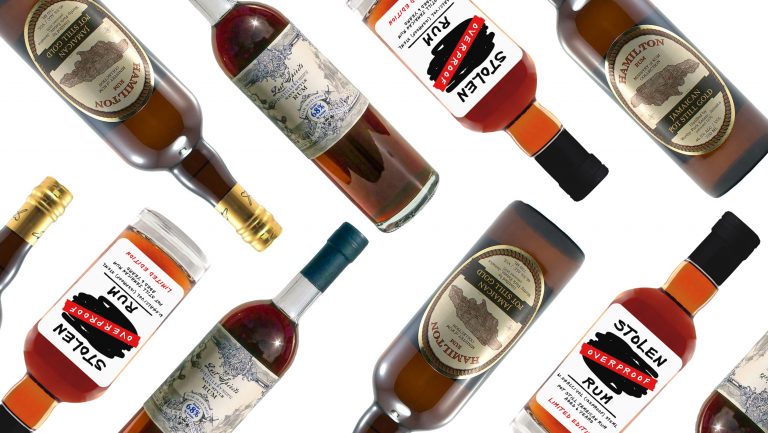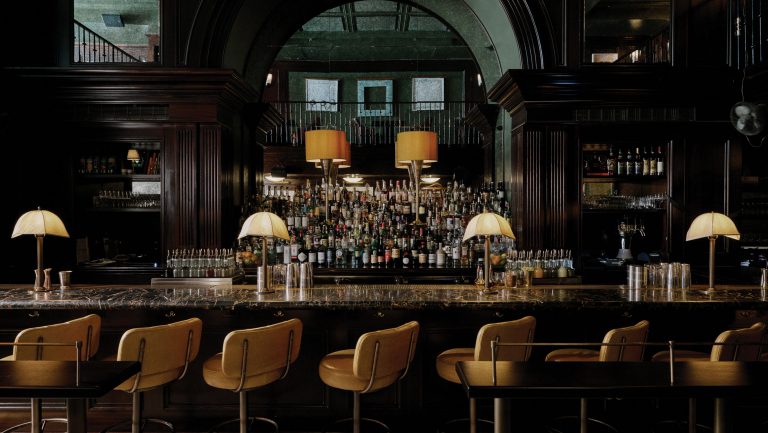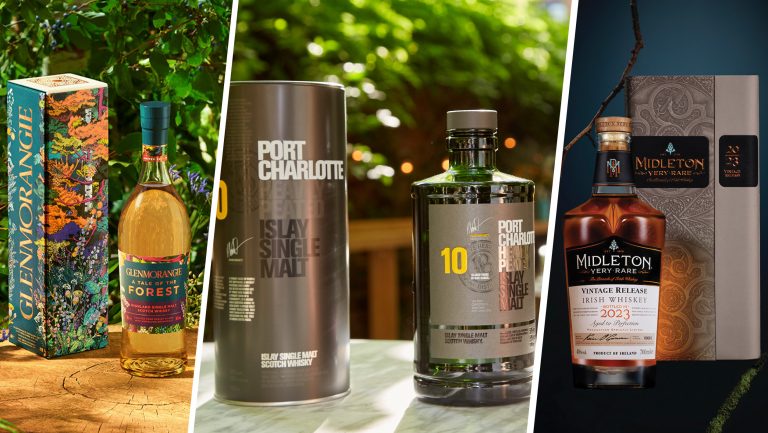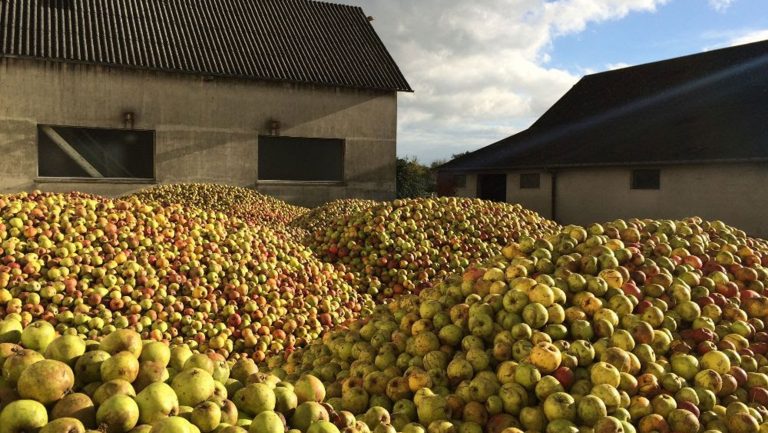Smell that? It smells like 1830.
Funky, meaty, vegetal. This rum is made with seat-of-the-pants pot-still technology. And thanks to a handful of distillers who are answering the demands of curious bartenders, this style has been making a comeback in recent years.
In the beginning, all rum was funky. A merchant in Philadelphia wrote in 1702 that customers only wanted to buy product that had “the right rum stink,” which came to be referred to by those in the know as hogo. As spirits historian David Wondrich has written, that’s slang for haut goût—high taste—a term used to describe the not entirely wholesome fragrance of aging meat. Chemically speaking, hogo reflects the presence of ester compounds created when acids in the distillate combine with other elements and produce a dense, fruity aroma. Some found this characteristic desirable in 18th-century rums.

Don’t miss the latest drinks industry news and insights. Sign up for our award-winning newsletters and get insider intel, resources, and trends delivered to your inbox every week.
What puts the goût in hogo? It’s not so much what goes into the rum as the production methods used to make it. Distillers allow for a much longer fermentation. Rather than the typical one to three days, these rums may ferment (often in open vats) for two weeks or longer, allowing more complex flavors to emerge. There’s also a tradition of using what’s called “dunder” by some and “muck” by others—a soup of microbial fermentation that’s made by exposing spent stillage to natural elements found in and around a distillery. When the muck is added to the traditional yeast fermentation, this stresses the yeast and causes it to produce more acids. These then combine with elements in the wood barrels and air to create the desirable funky notes. Rums of this sort are often made (at least in part) in pot stills, which allow more flavors to linger than do modern column stills, which are prized for their efficiency in stripping out impurities.
At the outset of the rum industry, distilleries cropped up across the West Indies, where sugar cane was predominantly grown. Some of these islands were more famous for their hogo than others, but later in the 19th century, hogo was considered less a desirable feature and more of a flaw as tastes became more refined. Consumers started to eschew the rum stink.
The Bacardi family set about fixing the flaw when they launched a distillery in Cuba in 1862, filtering their rum and paying closer attention to distillation and aging. “Rum, by the grace of a family named Bacardi and of American prohibition, had become, in fact, a gentleman’s drink,” wrote cocktail writer Basil Woon in 1928. Smitten Americans snuck a bottle or two of Bacardi back in their luggage during Prohibition, and Bacardi rum was everywhere after American bars reopened in 1933. Rum continued to evolve toward the lighter and crisper style in the 1950s, also known as vodka’s era, when consumers sought out spirits that were light almost to the point of invisibility. Smirnoff reigned as king, attended by the driest of London gins and the palest of blended whiskeys. Light rum was happy to serve as courtier—and high-hogo rums were largely exiled to overlooked enclaves in the Caribbean.
That is, until the last decade or so. The craft cocktail renaissance roared in, led by bartenders who placed a premium on bold, sometimes extinct flavors. Many discovered old bar guides and wanted to re-create drinks served by Jerry Thomas, the author of the first bar book in 1862 (he called for Jamaican rum in hot spiced rum and eggnog, among other drinks), or Donn Beach (Don the Beachcomber), who opened the first tiki bar in 1934 and called for Jamaican rum in his Jamaican Planter’s Punch, Navy Grog, and Test Pilot.
So importers and adventurous distillers started bringing back fruity, funky, high-ester rums. The return of hogo has led to a renewed embrace of rums that have been around but underappreciated, such as Appleton from Jamaica, and El Dorado from Guyana. And new rums with plenty of hogo flavor have also emerged, with Smith & Cross (a blend of Jamaican pot-stilled rums) leading the way, and others, like Scarlet Ibis, close behind.
More recently, rum expert and entrepreneur Edward Hamilton started searching out funky rums from Jamaica, Guyana, and Saint Lucia and began importing and selling them under the Hamilton label.
And some American craft distillers are setting off in pursuit of hogo, too. Scott Blackwell at High Wire Distilling Company in South Carolina makes a wonderfully funky rum using freshly crushed sugar cane juice from three South Carolina farms, borrowing techniques from the French island of Martinique. A new microdistillery in New Orleans—called Roulaison Distilling Co—borrows from Jamaica, gathering spent stillage and fermentation leftovers to be discovered by microbes, then adding it to the wash to create a flavor as big and bold as some traditional Jamaican rums.
But the most interesting experiments might be happening at Lost Spirits in Los Angeles. Distiller Bryan Davis has tweaked his rum to generate more flavorful esters (including by using microbe-infested bananas). He then takes the distillate and runs it through a patented reactor, which essentially flash-ages his Navy Style Rum, giving it—in a week—a flavor profile not far from one stashed in a barrel for a decade or two.
Rum may at last have come full circle, returning to the days of sailing ships and ragged, pot-stilled spirits. The future, it turns out, lies behind us.
5 Rums That Bring the Funk
Smith & Cross Jamaica Rum
Smith & Cross blends two styles of Jamaican rum, called Plummer and Wedderburn, whose names are antique terms used to describe the levels of congeners—nonethanol by-products of fermentation—in rum. This blend was designed to mimic some of the old-style Jamaican rums that are called for in vintage tiki drink recipes.
Lost Spirits Navy Style Rum
Made in Los Angeles by maverick distiller Bryan Davis, this rum is reminiscent of early Jamaican rums, with big, brash, fruity notes. But that doesn’t come from long residency in a barrel. It’s got huge, bold flavor on entry and finish, with bright, uncommon notes dancing around the mid-palate.
Stolen Overproof Rum
This rum comes from Hampden Estate in Jamaica, one of the older and more traditional rum distilleries on the islands. The use of long fermentation and microbial muck to enhance the acids leads to some of the highest-ester counts of any distillery. (Many other distillers buy this high-ester rum for blending.) Stolen Overproof is aged six years and bottled at 123 proof—it packs a punch, with big banana and pineapple notes underlaid with charcoal.
Roulaison Distilling Co White Rum
Andrew Lohfeld and Patrick Hernandez opened their microdistillery in New Orleans earlier this year. With Lohfeld’s experience at Kings County Distillery in Brooklyn, New York, and a curiosity about high-ester rums, the two figured out how to punch up the aroma and flavor using a jury-rigged muck pit, adding some microbial wash just before running the still. For now, their rum is available only in Louisiana.
Hamilton Jamaican Pot Still Gold Rum
Rum educator and importer Edward Hamilton sources this oversized rum from Worthy Park, a centuries-old sugar estate with a new distillery in the hills of Jamaica. It’s the kind of rum you can smell from the next room—big and fruity and full of body. The amber blend of light and heavy pot-stilled rums is bottled at 93 proof. Hamilton also sells a black rum variation that’s darkened with caramel coloring.

Dispatch
Sign up for our award-winning newsletter
Don’t miss the latest drinks industry news and insights—delivered to your inbox every week.
Wayne Curtis is the author of And a Bottle of Rum: A History of the New World in Ten Cocktails and has written frequently about spirits for The Atlantic, Imbibe Magazine, Punch, The Daily Beast, and Garden & Gun, among others.







